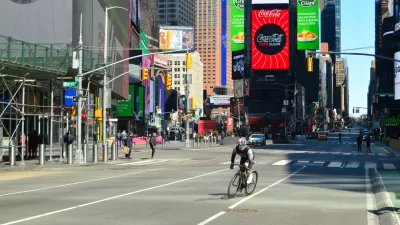The EPA's newly proposed rules to reduce sulfur in gasoline may have the perverse effect of making alternative vehicles, that is, those that don't run on gasoline, less competitive with conventional vehicles and ensure that we remain addicted to oil.
Matthew Wald explains the arcane nature of the new EPA rules and their effect on tomorrow's motor vehicles. The good news is that conventional vehicles burning gasoline will become more efficient; the bad news is that the rule will "likely help the conventional automobile survive against competition from vehicles powered by electricity, natural gas and other cleaner alternatives."
Is a leaner, gas-sipping auto the best way to go, even if it means crowding out vehicles that don't burn any gasoline?
THE Environmental Protection Agency’s latest proposed tightening of limits on sulfur in gasoline, and its previous rules, will most likely have the perverse consequence of retarding the development of cars running on batteries, advanced biofuels or hydrogen — all promising but expensive technologies that have not become mass-market products.
The thrust of the Tier 3 rules are to protect the catalytic converter from the destructive aspect of sulfur. But it's effects may be further reaching. But it's not solely the Tier 3 rules - it's the fuel efficiency requirement, also referred to as CAFE standard, that drove them and may prevent alternatives from getting a wider foothold.
Obscured by all the numbers is that the various technologies promoted as alternatives to gasoline — batteries, fuel cells or natural gas — are now facing a refined internal combustion engine. The federal government in large part drove automakers toward engine improvements by requiring them to essentially double fuel efficiency by 2025.
However, many in the environmental community dispute the assertion that the more efficient internal combustion engine represents a threat to alternative vehicles.
At the Union of Concerned Scientists, David Friedman, deputy director of the clean vehicles program, said that the Tier 3 proposal was a sign of success driven by the alternatives. “There is a long history of exactly this happening,” he said, recalling that when methanol was being promoted as a cleaner fuel the oil companies said, “'Hey, we can clean up our fuel, too.''’
FULL STORY: Emissions Rules Put Alternative-Fuel Vehicles in a Bind

Study: Maui’s Plan to Convert Vacation Rentals to Long-Term Housing Could Cause Nearly $1 Billion Economic Loss
The plan would reduce visitor accommodation by 25,% resulting in 1,900 jobs lost.

Alabama: Trump Terminates Settlements for Black Communities Harmed By Raw Sewage
Trump deemed the landmark civil rights agreement “illegal DEI and environmental justice policy.”

North Texas Transit Leaders Tout Benefits of TOD for Growing Region
At a summit focused on transit-oriented development, policymakers discussed how North Texas’ expanded light rail system can serve as a tool for economic growth.

San Diego County Sees a Rise in Urban Coyotes
San Diego County experiences a rise in urban coyotes, as sightings become prevalent throughout its urban neighbourhoods and surrounding areas.

Los Angeles County Invests in Wildfire Recovery for Parks, Trails, and Open Space
The $4.25 million RESTORE Program supports the recovery of parks, trails, and open spaces damaged by the January 2025 wildfires through targeted grants that promote community healing, wildfire resilience, and equitable access to nature.

Nevada Bills Aim to Establish Home Insurance Assurance Amidst Wildfire Risk
Republican sponsor hopes the FAIR plan would be “a true market of last resort.”
Urban Design for Planners 1: Software Tools
This six-course series explores essential urban design concepts using open source software and equips planners with the tools they need to participate fully in the urban design process.
Planning for Universal Design
Learn the tools for implementing Universal Design in planning regulations.
Alamo Area Metropolitan Planning Organization
City of Santa Clarita
Institute for Housing and Urban Development Studies (IHS)
City of Grandview
Harvard GSD Executive Education
Toledo-Lucas County Plan Commissions
Salt Lake City
NYU Wagner Graduate School of Public Service



























